This document discusses stacks and queues as abstract data types. It defines stacks as LIFO (last-in first-out) data structures where elements can only be added or removed from one end. Queues are defined as FIFO (first-in first-out) structures where elements can be added to one end and removed from the other. Common operations for each like push, pop, enqueue, dequeue are described along with pseudocode algorithms. Implementation of stacks and queues using arrays is provided as an example.
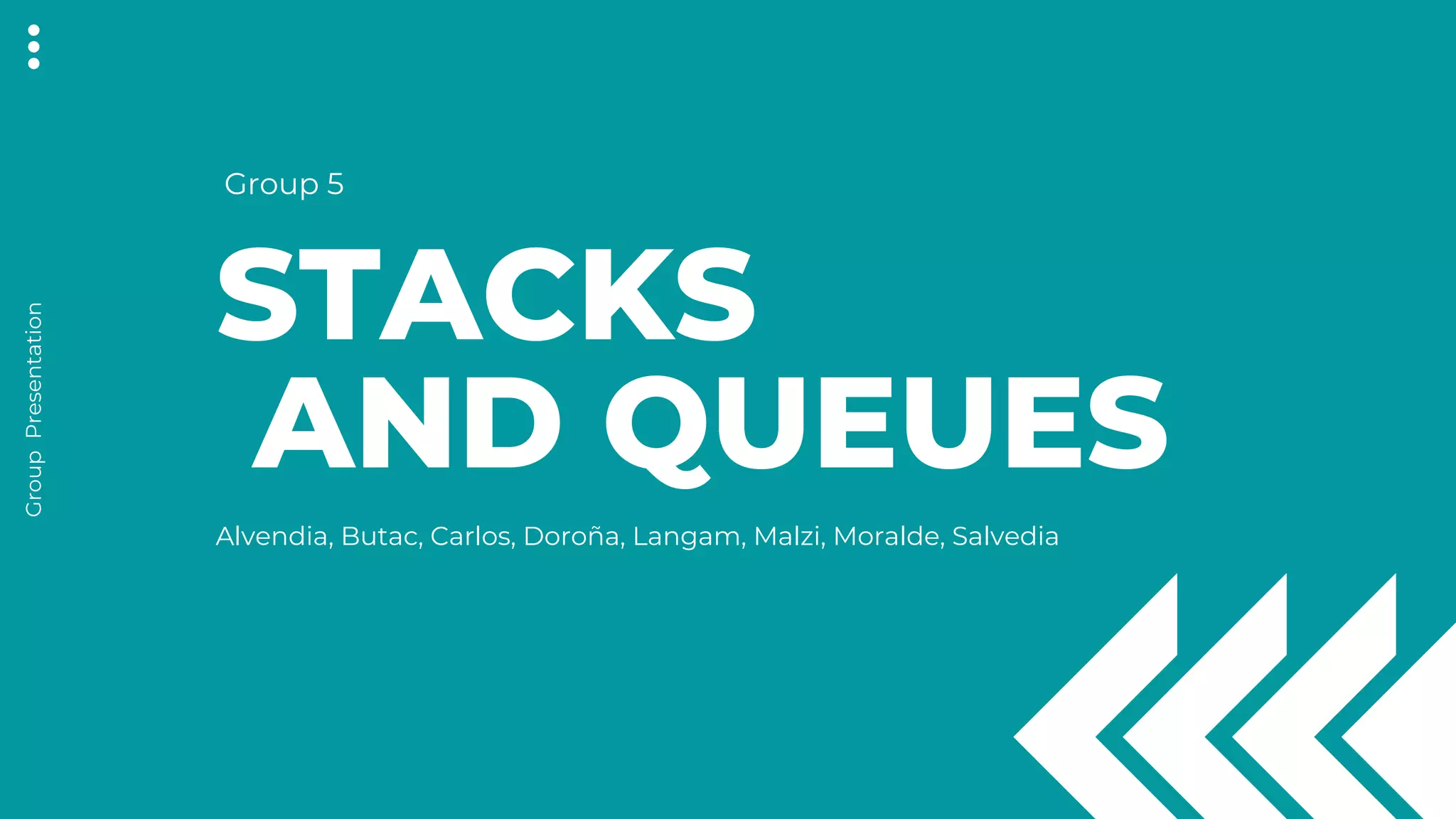
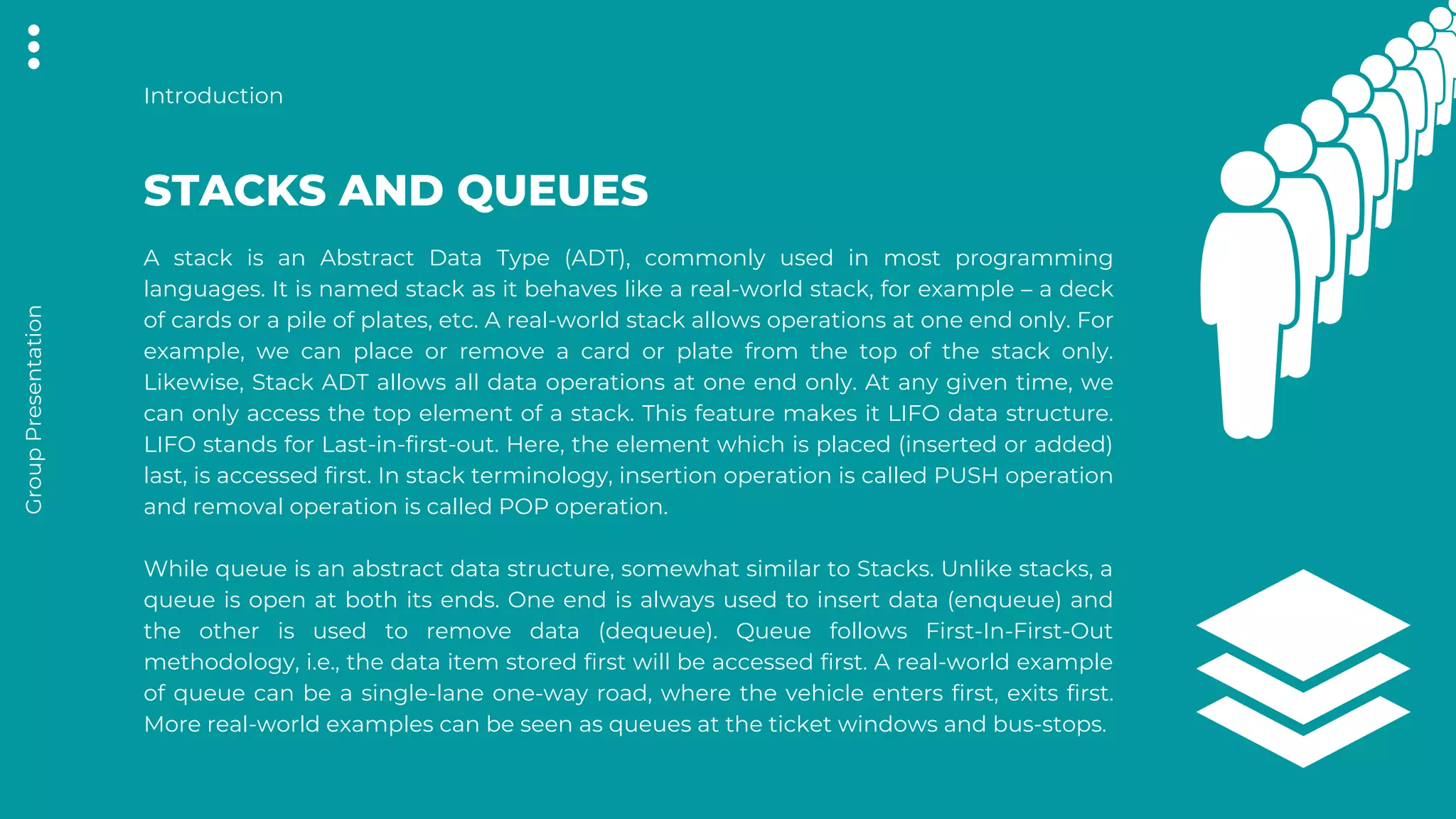

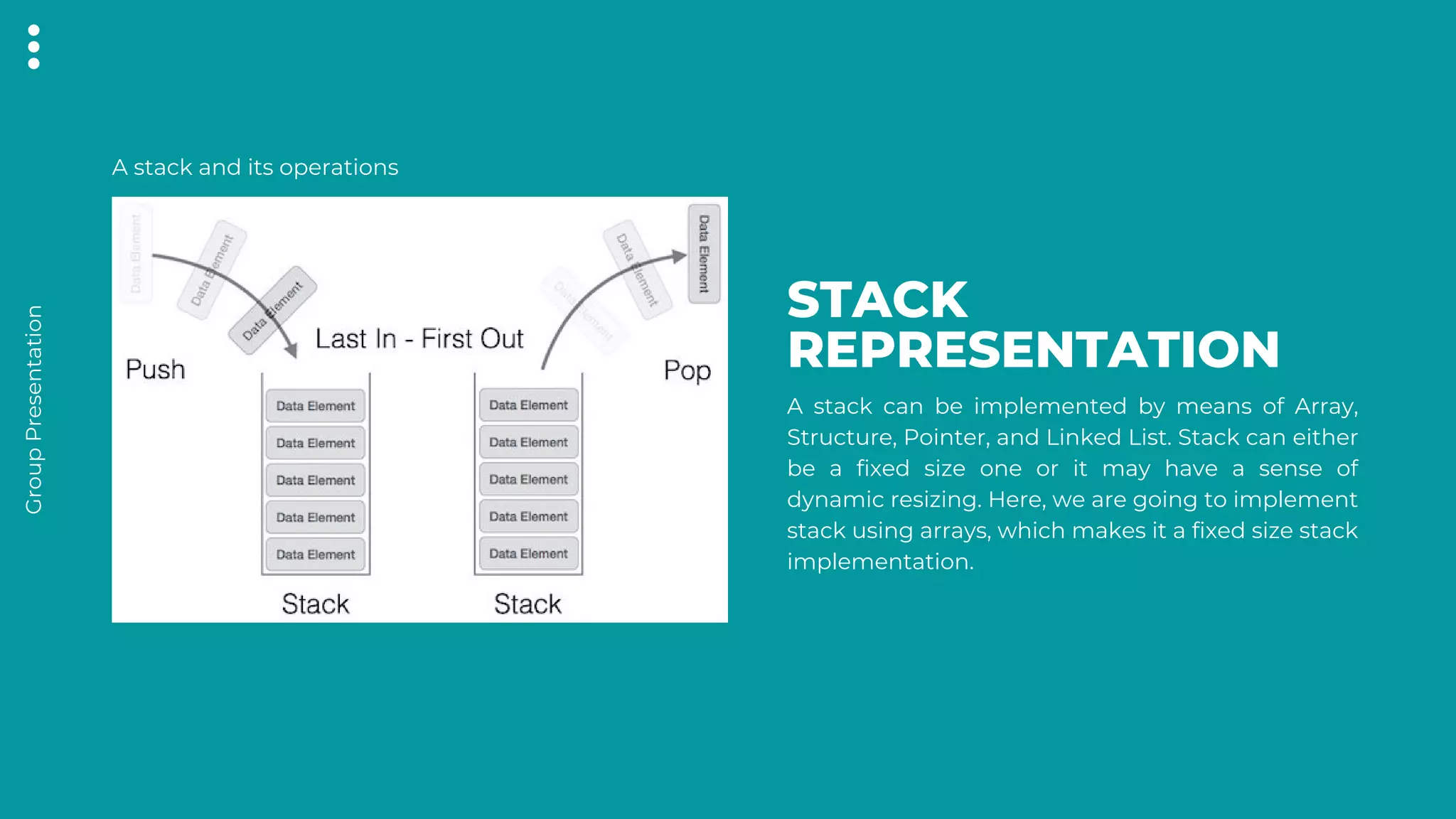
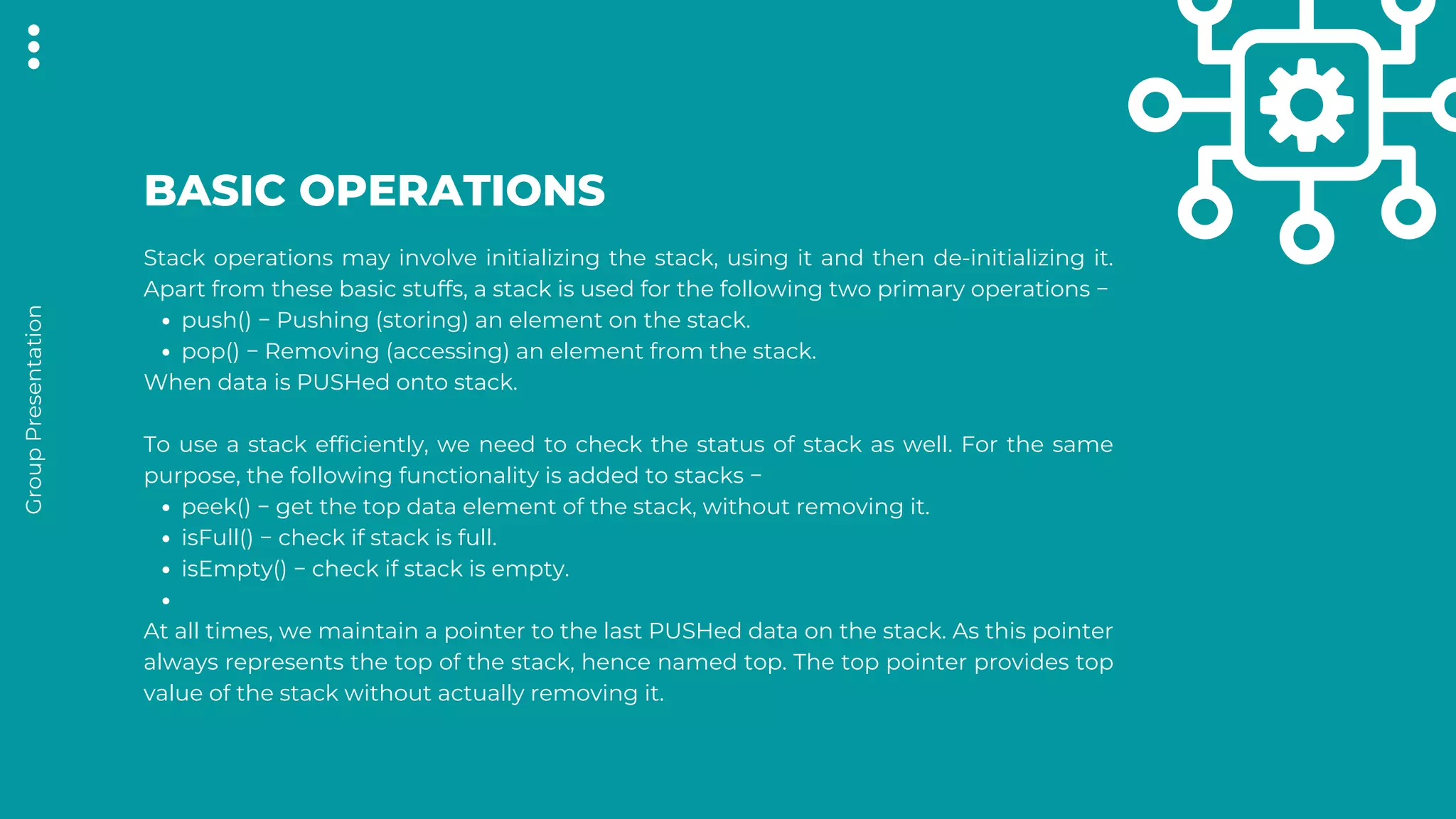

![peek()
Algorithm of peek() function −
Implementation of peek()
function in C programming
language −
isfull()
Algorithm of isfull() function −
begin procedure peek
return stack[top]
end procedure
int peek() {
return stack [top];
}
begin procedure isfull
if top equals to MAXSIZE
return true
else
return false
endif
end procedure
Implementation of
isfull() function in C
programming
language −
bool isfull() {
if(top==MAXSIZE)
return true;
else
return false;
}
Example
Example](https://image.slidesharecdn.com/group-5-stacks-and-queues-221011030508-3d57c7b6/75/Stacks-and-Queues-pdf-7-2048.jpg)
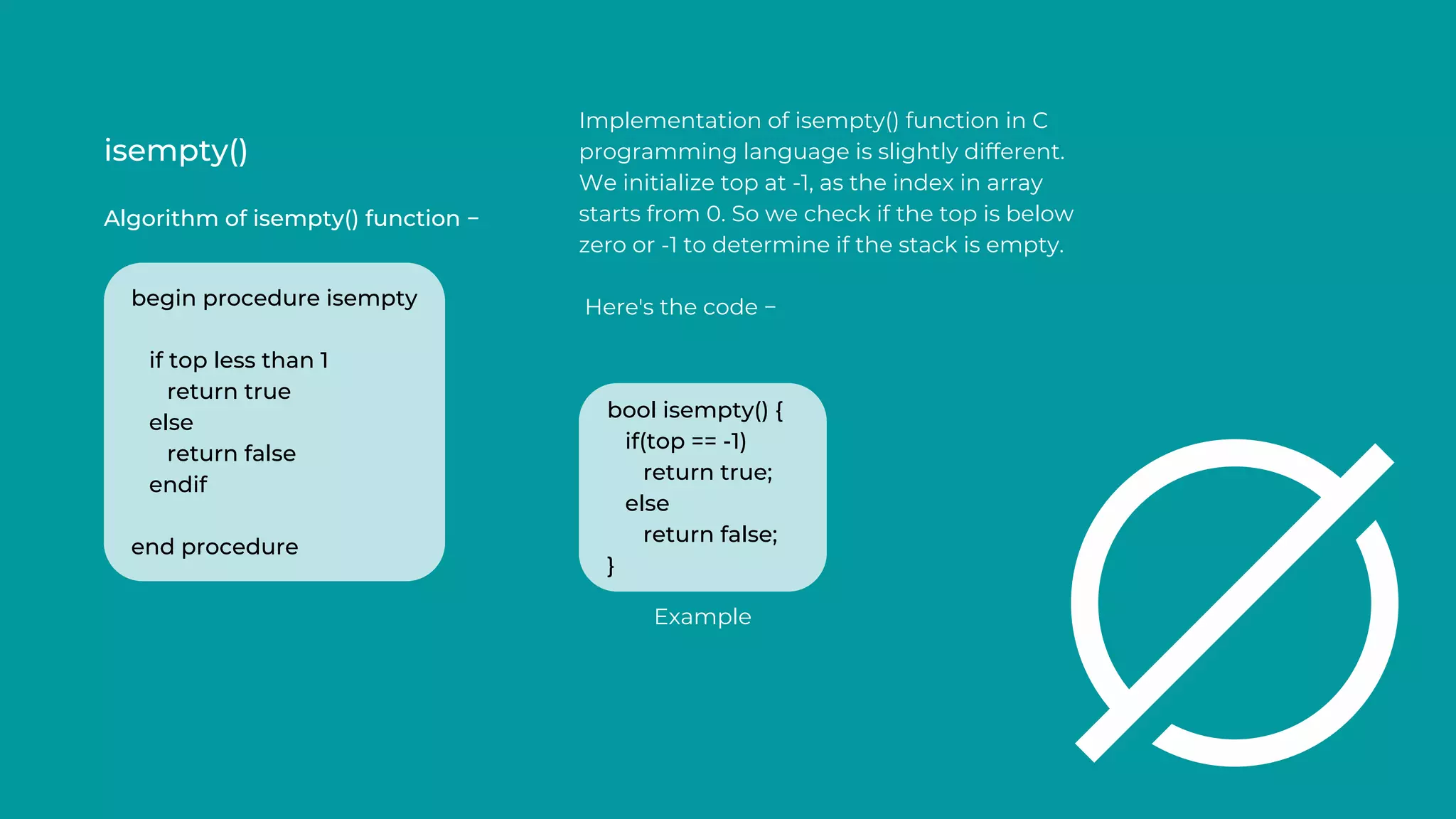
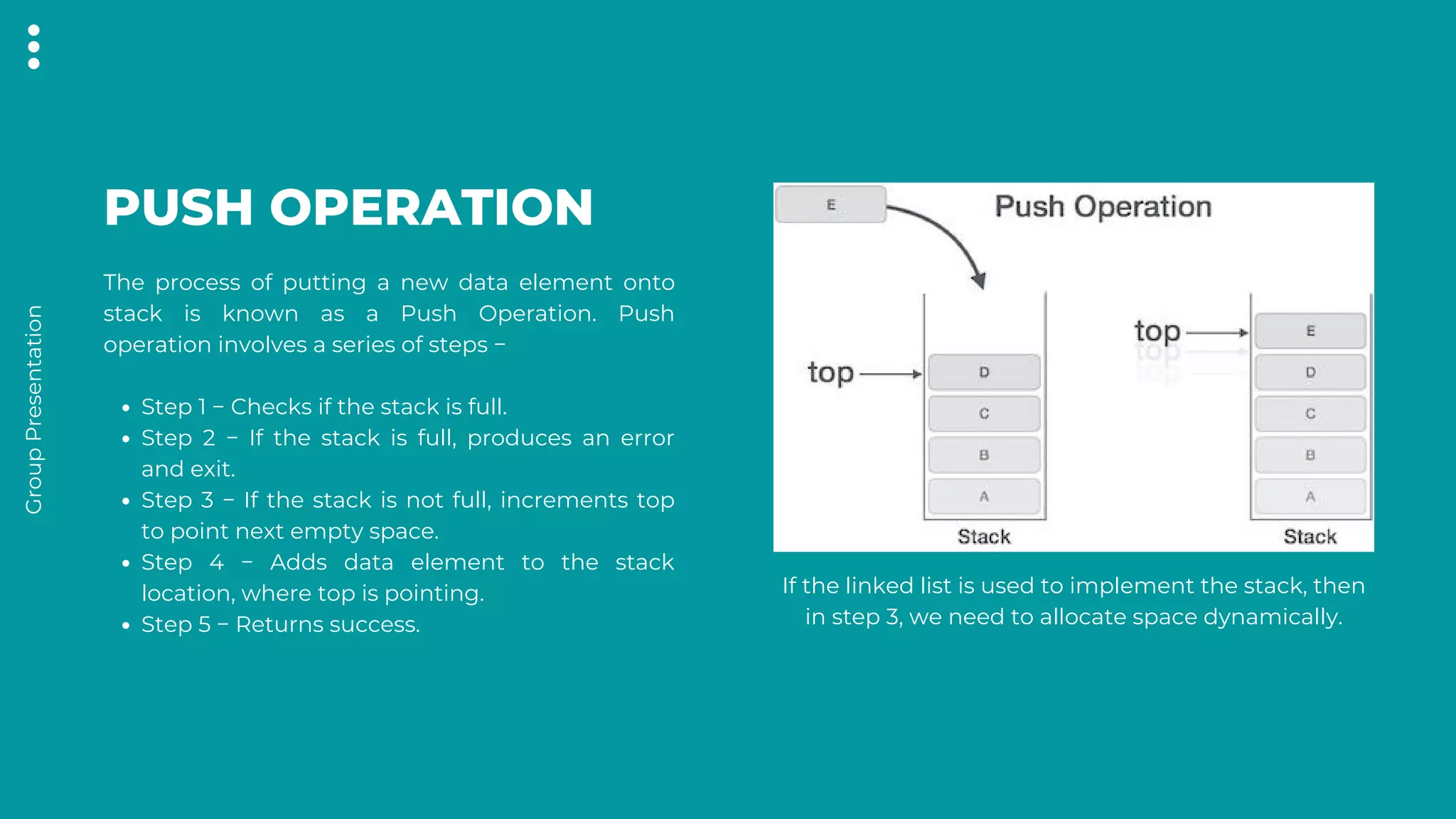
![Algorithm for
Push Operation
A simple algorithm for Push
operation can be derived as
follows −
Implementation of this algorithm in C, is
very easy.
See the following code −
begin procedure push: stack, data
if stack is full
return null
endif
top ← top + 1
stack[top] ← data
end procedure
void push(int data) {
if(!isFull()) {
top = top + 1;
stack[top] = data;
} else {
printf("Could not insert data, Stack is full.n");
}
}
Example](https://image.slidesharecdn.com/group-5-stacks-and-queues-221011030508-3d57c7b6/75/Stacks-and-Queues-pdf-10-2048.jpg)

![Algorithm for
Pop Operation
A simple algorithm for Pop
operation can be derived as
follows −
Implementation of this algorithm in C, is as
follows −
begin procedure pop: stack
if stack is empty
return null
endif
data ← stack[top]
top ← top - 1
return data
end procedure
int pop(int data) {
if(!isempty()) {
data = stack[top];
top = top - 1;
return data;
} else {
printf("Could not retrieve data, Stack is empty.n");
}
}
Example](https://image.slidesharecdn.com/group-5-stacks-and-queues-221011030508-3d57c7b6/75/Stacks-and-Queues-pdf-12-2048.jpg)
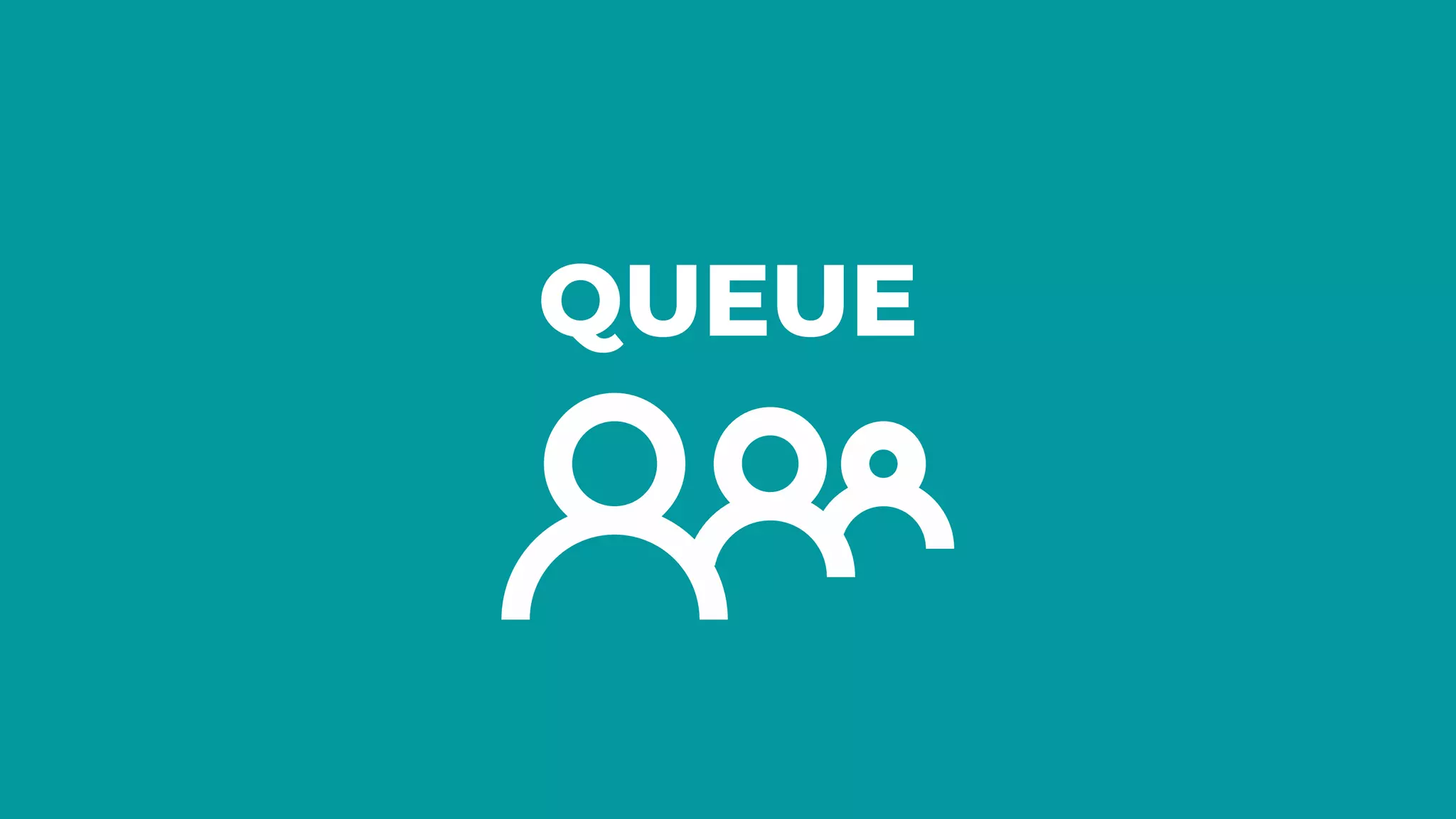
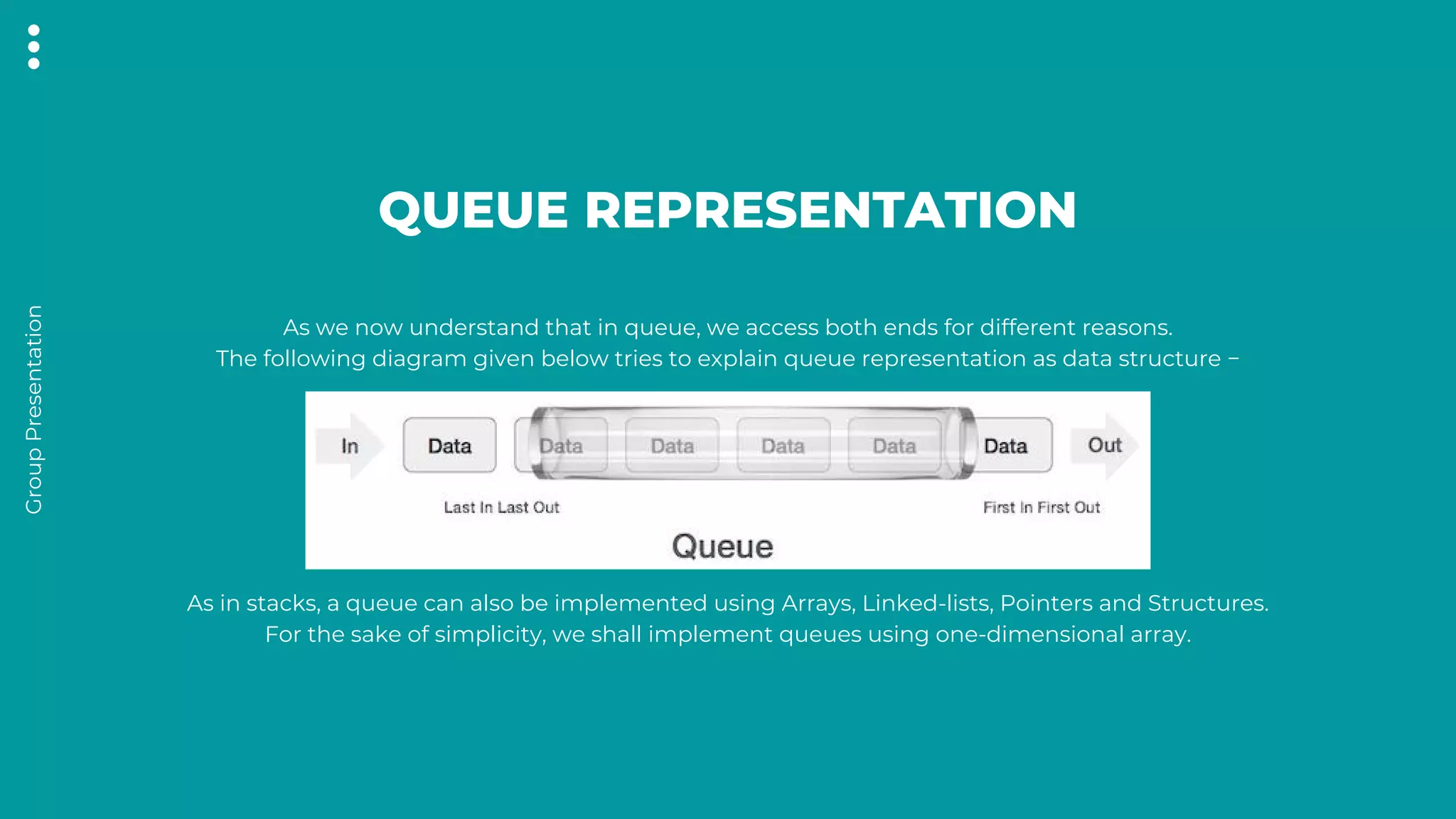

![peek()
This function helps to see the data at the front of the
queue. The algorithm of peek() function is as follows −
Algorithm
Implementation of peek()
function in C programming
language −
isfull()
As we are using single dimension array to implement
queue, we just check for the rear pointer to reach at
MAXSIZE to determine that the queue is full. In case
we maintain the queue in a circular linked-list, the
algorithm will differ. Algorithm of isfull() function −
Algorithm
begin procedure peek
return queue[front]
end procedure
int peek() {
return queue[front];
}
begin procedure isfull
if rear equals to MAXSIZE
return true
else
return false
endif
end procedure
Implementation of
isfull() function in C
programming
language −
bool isfull() {
if(rear == MAXSIZE - 1)
return true;
else
return false;
}
Example
Example](https://image.slidesharecdn.com/group-5-stacks-and-queues-221011030508-3d57c7b6/75/Stacks-and-Queues-pdf-16-2048.jpg)
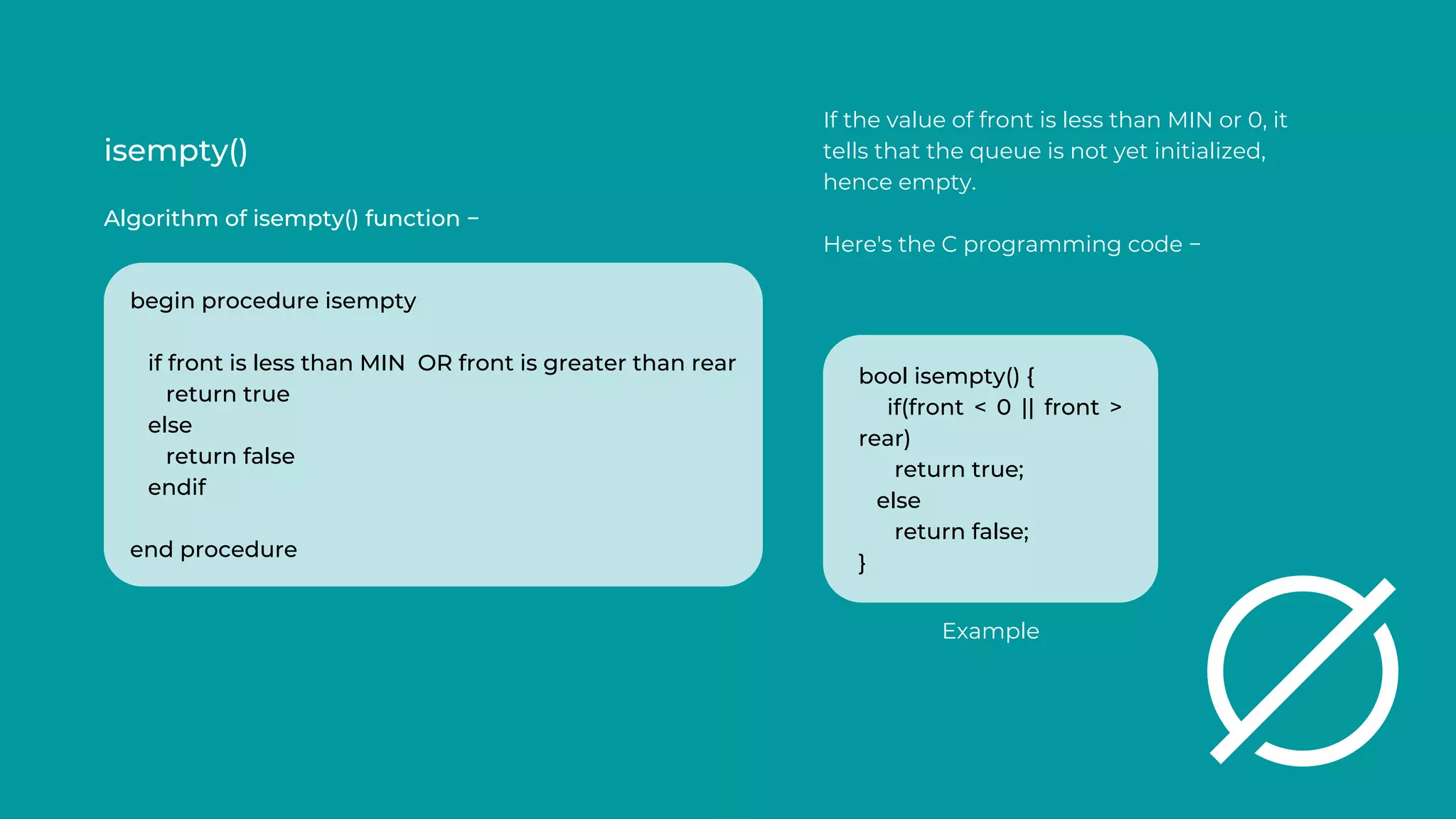
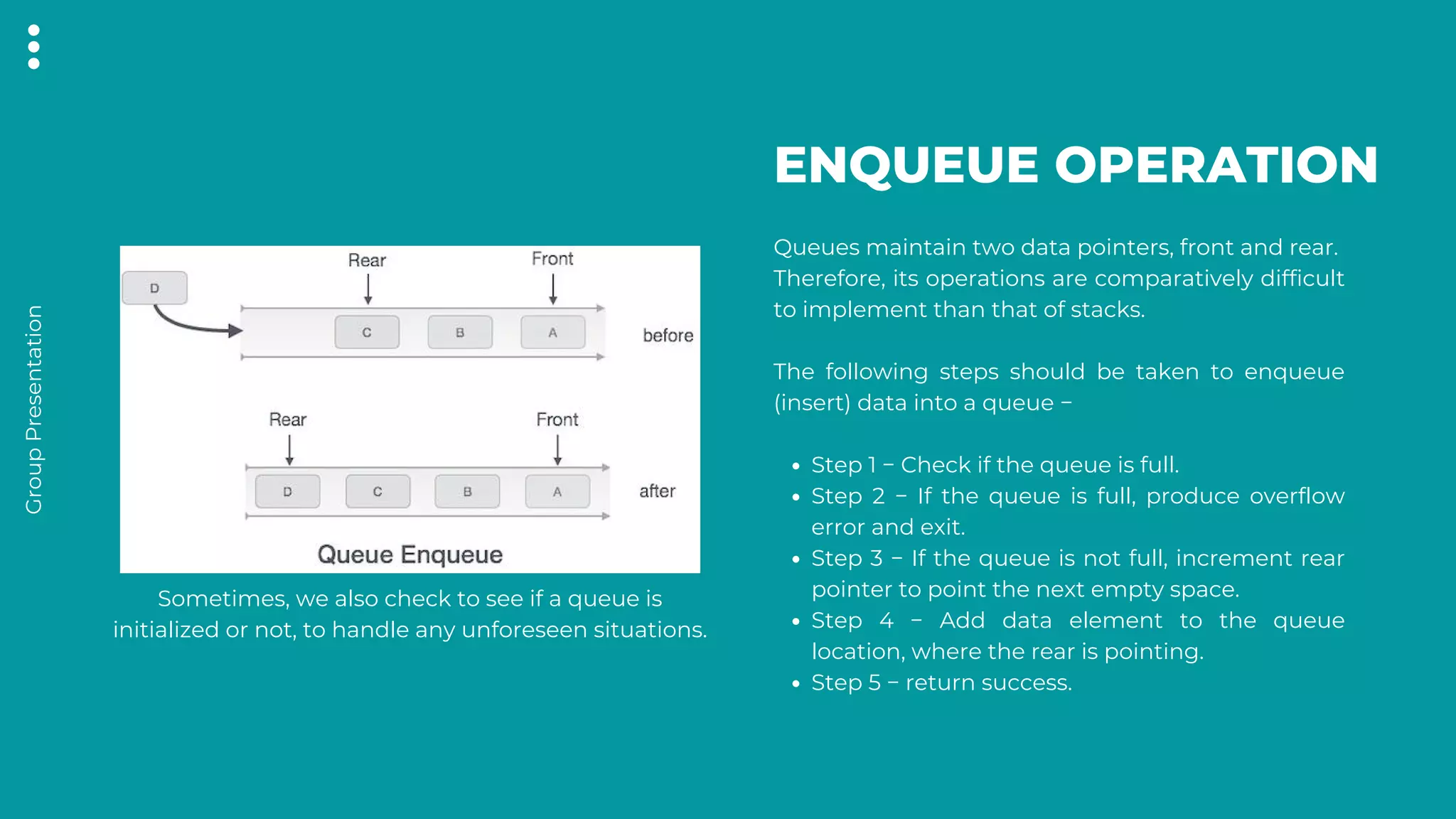
![Algorithm for
Enqueue Operation
Implementation of enqueue() in C
programming language −
procedure enqueue(data)
if queue is full
return overflow
endif
rear ← rear + 1
queue[rear] ← data
return true
end procedure
int enqueue(int data)
if(isfull())
return 0;
rear = rear + 1;
queue[rear] = data;
return 1;
end procedure
Example](https://image.slidesharecdn.com/group-5-stacks-and-queues-221011030508-3d57c7b6/75/Stacks-and-Queues-pdf-19-2048.jpg)

![Algorithm for
Dequeue Operation
Implementation of dequeue() in C
programming language −
procedure dequeue
if queue is empty
return underflow
end if
data = queue[front]
front ← front + 1
return true
end procedure
int dequeue() {
if(isempty())
return 0;
int data = queue[front];
front = front + 1;
return data;
}
Example](https://image.slidesharecdn.com/group-5-stacks-and-queues-221011030508-3d57c7b6/75/Stacks-and-Queues-pdf-21-2048.jpg)